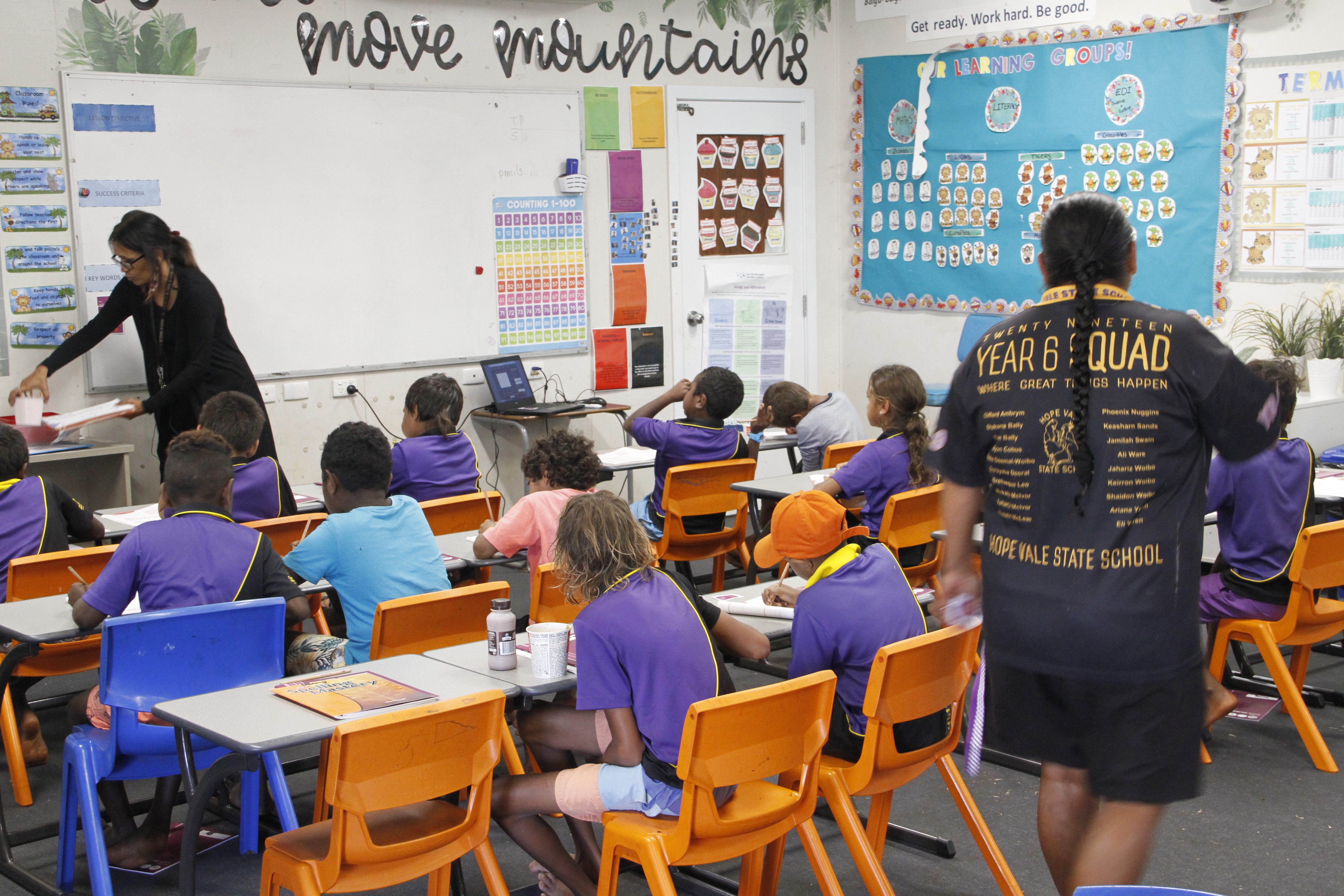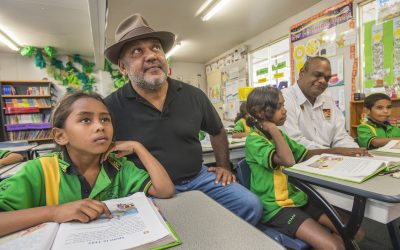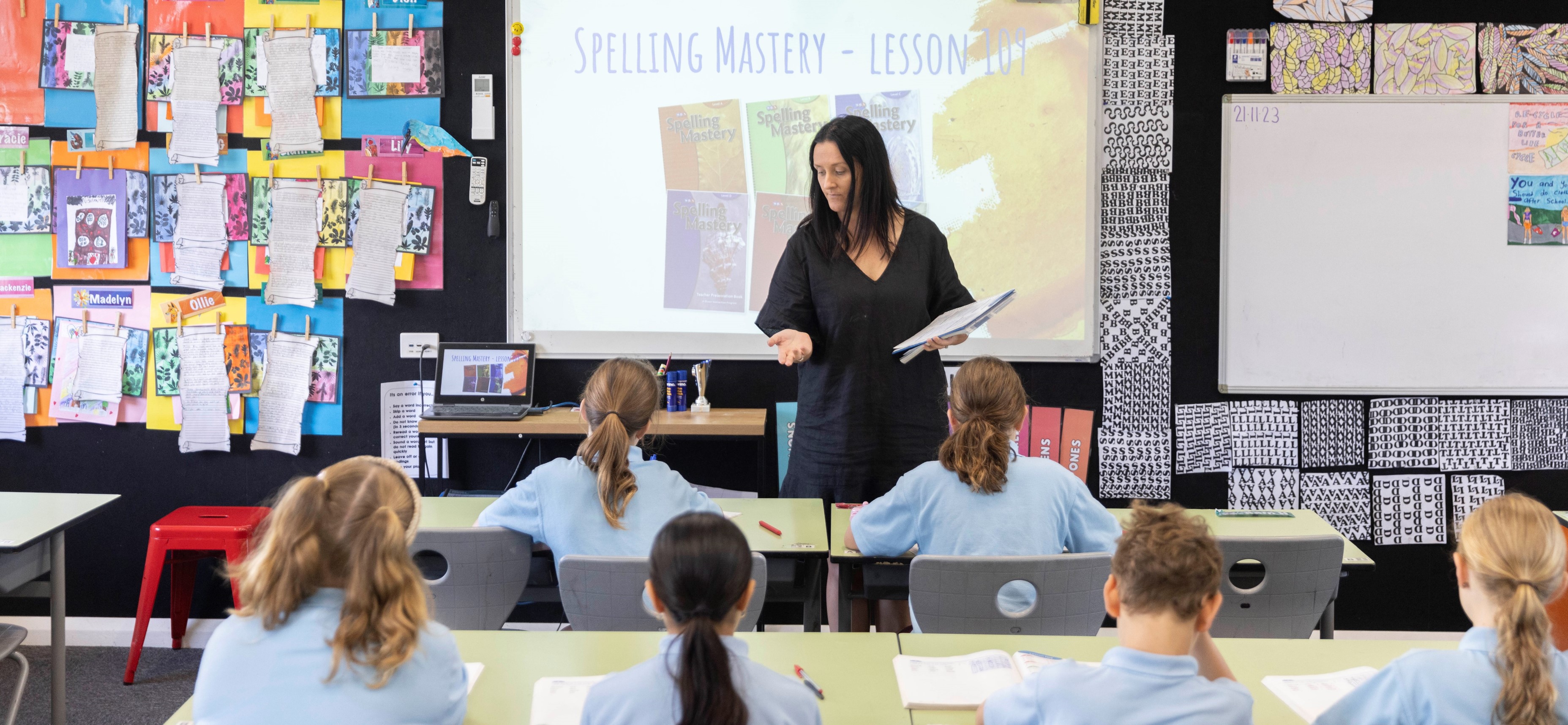How to Teach High-Frequency Words
Children typically begin learning to read between the ages of 5 and 7, which corresponds to the Foundation and Year 1 stages of education in Australia. This is when children are introduced to the relationship between sounds and letters: the first step on their journey to discovering reading and learning literacy.
In those early stages, children will encounter their very first words, from common verbs and nouns like “do” and “girl” to functional words such as the article “the” and the preposition “in”. These are what are known as high-frequency words,which are usually introduced in Year 1. These words make up the basic components of the sentences we use every day to convey basic meaning and describe the world around us.
High-frequency words are taught using a combination of phonics, which teaches children to sound out words letter by letter, and sight word reading, or learning to recognise the word from memory. Once learned, they provide children with a solid foundation which sets them on the path to becoming proficient readers and writers.
In this article, we examine high-frequency words in the context of teaching early learners of English. We will explore in depth the most effective instructional approaches, and we will provide examples of dynamic activities practising high-frequency words that stimulate the senses of all types of learners.
High-frequency words: An overview
Words and literacy
Words are the building blocks of language: it’s how we construct meaningful sentences which we use to communicate with each other. Children’s first encounter with language is through the voices of their parents, who interact with them and read them stories. Eventually, they learn to understand and speak for themselves.
Reading and writing form the basis of literacy and require knowing the alphabet. These involve learning complex skills such as the ability to recognise and remember individual letters and words and to distinguish them from one another, and then to eventually reproduce them in writing on the page.
Reading and writing can therefore only be learned through timely targeted teaching strategies.
Phonics and sight word reading
There are two distinct strategies that are adopted by teachers in the initial stages of teaching reading to children:
- Phonics, which is how readers learn to decode the sound of a word by “sounding out” each letter in the word individually.
- Sight word reading, which relies on memorising the shape of a word and recognising it in its entirety.
Depending on the word, a different strategy will be used:
- Some words contain letters whose sound map onto the correct sound in the context of the word (e.g. “cat” → c-a-t, “on” → o-n), so that children can sound them out letter by letter. In this case, phonics is used.
- Other words, however, are made up of letters whose sound does not directly correspond to their respective sounds in the word (e.g. “would” → w-u-d, “said” → s-e-d), and as such need to be learned “by sight”, hence why it’s called sight word reading.
The definition of high-frequency words
High-frequency words are a group of words which appear most frequently in a given context. In the case of beginner readers, high-frequency words are the words they will first encounter in the books they are reading.
There have been many high-frequency lists compiled from a variety of sources and based on different criteria. The ones that are most often cited in the context of early learners are the Dolch (1936) and Fry (1957) lists. There is significant overlap in the words contained in each of them, although they differ in the order in which they introduce them.
In each of these lists, the words can be divided into two groups: words that can be sounded out with phonics, and words which can’t. The ones that can’t be sounded out are called sight words. The difference between sight words and high-frequency words is that sight words can’t be figured out based on the sound of the individual letters alone, and so need to be committed to memory and recognised. Examples of words with this irregular spelling include “about”, “one”, and “sight”.
Therefore, when teaching high-frequency words, a blended approach of phonics and sight word reading needs to be implemented.
Practical steps for teaching high-frequency words
High-frequency words feature heavily in early education. Young learners therefore need to be able to recognise and learn these words in order to become fluent readers and writers later on.
General best practices
The first rule of teaching high-frequency words is that we don’t call them high-frequency words. While the term might be useful for teachers and adults, it will only confuse early learners who are beginning to grapple with the written word for the first time. Consider coming up with a different name for this group of words; or you can treat them like any other word and let the teaching and activities do the talking.
Here are three more suggestions for teaching high-frequency words that you might want to consider:
Repetition and exposure
Central to acquiring any word is the principle of repetition. Regular encounters with high-frequency words in classroom activities, reading materials, or indeed any other educational scenario are essential for embedding them in students’ long-term memory. Teachers should therefore make sure to create or select reading and writing exercises accordingly, as well as including them in classroom displays to guarantee that learners are exposed to and engage with these words as much as possible.
Contextual learning
Embedding words in meaningful contexts significantly boosts retention. By integrating high-frequency words into storybooks, crafting sentences around them, or pointing them out in daily scenarios, students can understand how these words are used in everyday life. This approach aligns with the understanding that learning is most effective and engaging when it is relevant and contextualised.
Incremental introduction
Teachers should introduce high-frequency words in small, bite-sized sets, starting with the 10 most basic and common high-frequency words and working up to the harder ones. This will allow children to feel a sense of accomplishment and will fuel their motivation for the more challenging stages of the learning process, while at the same time preventing them from becoming overwhelmed early on.
High-frequency word activities and games
1. Reading in context
Reading familiar stories provides a comfortable and engaging setting in which students can encounter high-frequency words in context.
- I do: Select a familiar story containing several high-frequency words and read it aloud to the class. While reading, pause at each high-frequency word and check to make sure the class knows what it means.
- We do: Together, the class re-reads the story. Guide the reading, pausing at high-frequency words and encouraging students to read these words aloud in unison.
- You do: Give students a copy of the story and ask them to look for and circle all the high-frequency words. Check in with the class to see how many they got, and praise students who get the closest to the total number.
2. Word walls
The word wall can be organised in different ways (e.g. alphabetically or by word category). Students can be encouraged to use the word wall as a reference when needed.
- I do: Introduce the word wall by demonstrating how to add a new word to the wall: write the word on a card, discuss its meaning, and place it on the wall. You can add images associated with each word to make this activity even more visually engaging.
- We do: Taking the text you read together in the previous activity, students take turns to identify a high-frequency word. Write each word on some card, discuss its meaning and its use, and add it to the word wall with the students’ assistance.
- You do: Give students a word-matching activity to find words from the word wall that fit certain criteria (e.g., “find a verb”, “find a word you would use at home”).
3. Bean bag toss
Learners get to practise their reading and speaking skills with a twist.
- I do: Lay out word cards on the floor with high-frequency words on them. Demonstrate tossing a bean bag onto a word card, then read the word aloud to model the pronunciation of the word.
- We do: Students form a large circle around the word cards and take turns tossing the bean bag onto a card. The whole class reads the word the bean bag lands on together to reinforce the word. Repeat until all word cards have been read out.
- You do: Put students in pairs and give them their own set of smaller word cards and a beanie ball. Show them how to set it up on their table. Students take turns tossing the beanie ball and reading words aloud. They encourage each other and help with difficult words if needed.
Teaching high-frequency words: Next steps
The theoretical backbone of phonics and sight word recognition is complemented by dynamic high-frequency word activities to help children navigate the path to literacy. These two elements form the foundations for early literacy education by creating a structured and engaging learning environment that ensures no child is left behind.
If you want to explore more resources to support you in teaching pre-literacy and literacy skills to students in Years Foundation to 6, check out our English lessons and workbooks mapped to the Australian English Curriculum.



